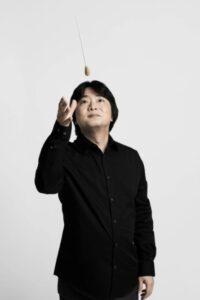Simon Hale is at Symphony Hall as the CBSO marks the Russian composer’s anniversary.
There was a wavering balance between the symphonic and the balletic at Symphony Hall as the CBSO continued its celebrations of the 150th anniversary of the birth of Sergei Rachmaninoff.
In fact, not one but two Russians who had composed dance-like music were in the afternoon concert programme, with Rachmaninoff’s Symphonic Dances joined by Sergei Prokofiev’s Symphony No 1, which the composer himself dubbed his Classical Symphony.
As the conductor Kazuki Yamada said in his welcome, both pieces were written at a time of war and upheaval, with the Symphonic Dances composed in America in 1940 during the Second World War and the symphony in Russia in 1917 during the First World War and the Russian Revolution.
The big difference he also alluded to was that while Prokofiev left his native Russia and lived in America for a while before coming back, Rachmaninoff left Russia for America and never returned.

In a look back on his past, Rachmaninoff regarded his final composition as his finest orchestral work. Dedicated to the Philadelphia Orchestra, the CBSO in its take on the orchestral suite brought out all its melancholy, turbulence and foreboding, in contrast to its lyrical passages, making its three dances sound almost macabre especially the waltz with its wild tempo swings.
A beautiful saxophone solo from Kyle Horch clearly provided a nod to the New World in the use of modern instruments – and the echoing of his Second Symphony and his Vespers with its Orthodox chant and bells also brought out the composer’s obvious nostalgia.
Dance-like himself on the podium, Kazuki Yamada thrillingly cranked up the underlying tension and intensity not without some sardonic humour until the final dance seemingly as a Dies Irae narrative on the Last Judgment with its tremendous brass and percussive climax and conclusion.
Prokofiev’s Classical Symphony, on the other hand, was inspired by the 18th century symphonies of Joseph Haydn, with all their grace and elegance, but given a modern twist as a musical joke.
Balancing the classical with the novel trills, burring and changing timbres of 20th century music, the CBSO delivered a lively and bouncy conversation between the instruments.
The Russian works bookended a brilliantly detailed and thrilling performance of the Second Piano Concerto by French composer Camile Saint-Saëns – who composed the piece in only 17 days in 1867 – with the acclaimed Turkish pianist Fazil Say as soloist.
With its sombre Bach-like beginning, the piece continued as a dance piece with its light and playful scherzo and rapid whirling tarantella finale. From his facial and bodily expressions, the pianist seemed emotionally involved all the way in playing this virtuoso showpiece for all its worth.
Its enthusiastic applause called for an encore – and it came with one of Fazil Say’s own compositions, Black Earth. The intriguing work blended modern jazz with the Ottoman folksong of his homeland making it the perfect link to a wonderfully conceived and performed concert programme.
The CBSO will perform Rachmaninoff’s Second Piano Concerto with Jeneba Kanney-Mason as soloist, along with the Parsifal Suite by Richard Wagner (arranged by Andrew Gourlay), in an afternoon concert on Thursday, October 12th at Symphony Hall. For tickets call 0121 780 3333 or book online at cbso.co.uk
Pics – Fazil Say (cover) Fethi Karaduman, Kazuki Yamada (this page) Benjamin Ealovega.


